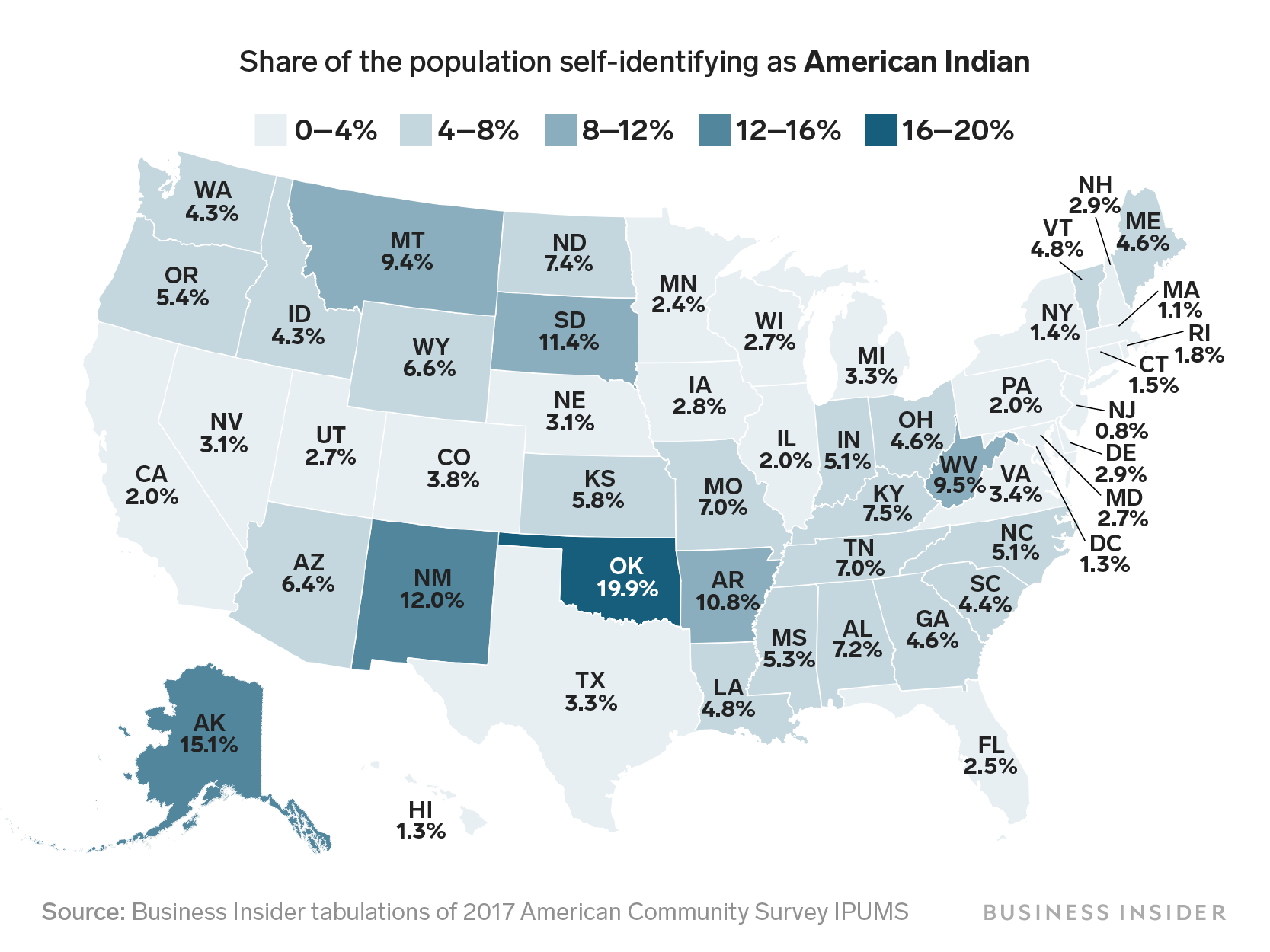- Thursday is Thanksgiving, but the holiday carries historical baggage.
- The traditional Thanksgiving story of a peaceful feast between settlers and Native Americans elides the often violent history of encounters between the two groups.
- According to Census data, many Americans identify as American Indian or Native American.
- The above map shows the share of people in each state self-identifying as having American Indian ancestry.
- Visit Business Insider’s homepage for more stories.
This week, millions of Americans are celebrating Thanksgiving, traveling home to eat turkey, stuffing, and a plethora of side dishes with family and friends.
But for many Native Americans, the holiday is fraught with historical baggage. The traditional story of the “first Thanksgiving,” commemorating a harvest feast celebrated between Plymouth colonists and members of the Native American Wampanoag tribe, elides the often violent nature of encounters between settlers and natives.
According to CNN, for the last 50 years, members of the Wampanoag tribe have instead commemorated a “National Day of Mourning” each November, remembering the darker and more genocidal aspects of that history.
Many Americans to this day self-identify as having Native or American Indian heritage. The Census Bureau’s American Community Survey asks several questions about residents’ economic, social, and demographic characteristics and situations. One of the questions on the survey asks respondents to report their families’ ancestries, listing up to two ethnic groups.
Using individual-level data from the Minnesota Population Center's Integrated Public Use Microdata Series for the 2017 American Community Survey, we found the number of respondents in each state who reported having American Indian ancestry. The Census data uses the term "American Indian" to designate self-identified native communities in the survey data. The above map shows the percentage of respondents self-identifying as American Indian as a share of the total number of respondents in each state who listed at least one ancestry on the survey.
Just under 20% of Oklahoma residents self-identified as having American Indian ancestry; 15.1% of Alaskans did likewise. States in the Northeast and Mid-Atlantic had much smaller shares, with New Jersey having the lowest share of residents self-identifying as American Indian at just 0.8%.











